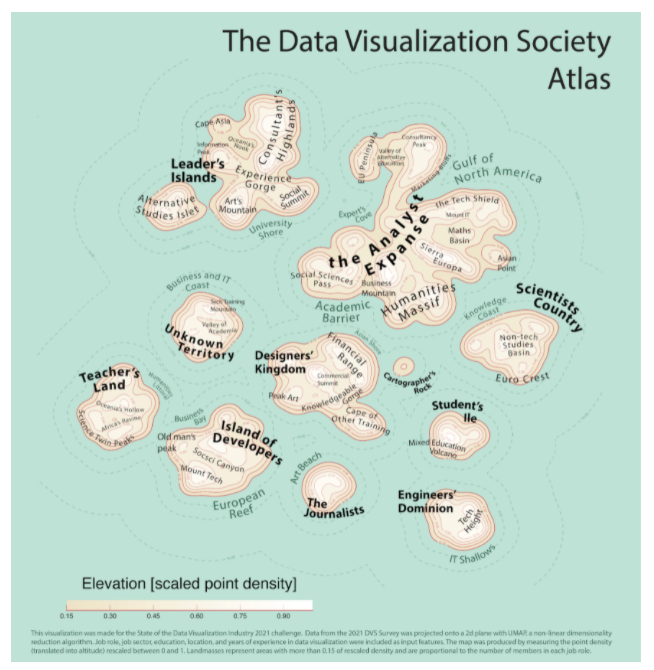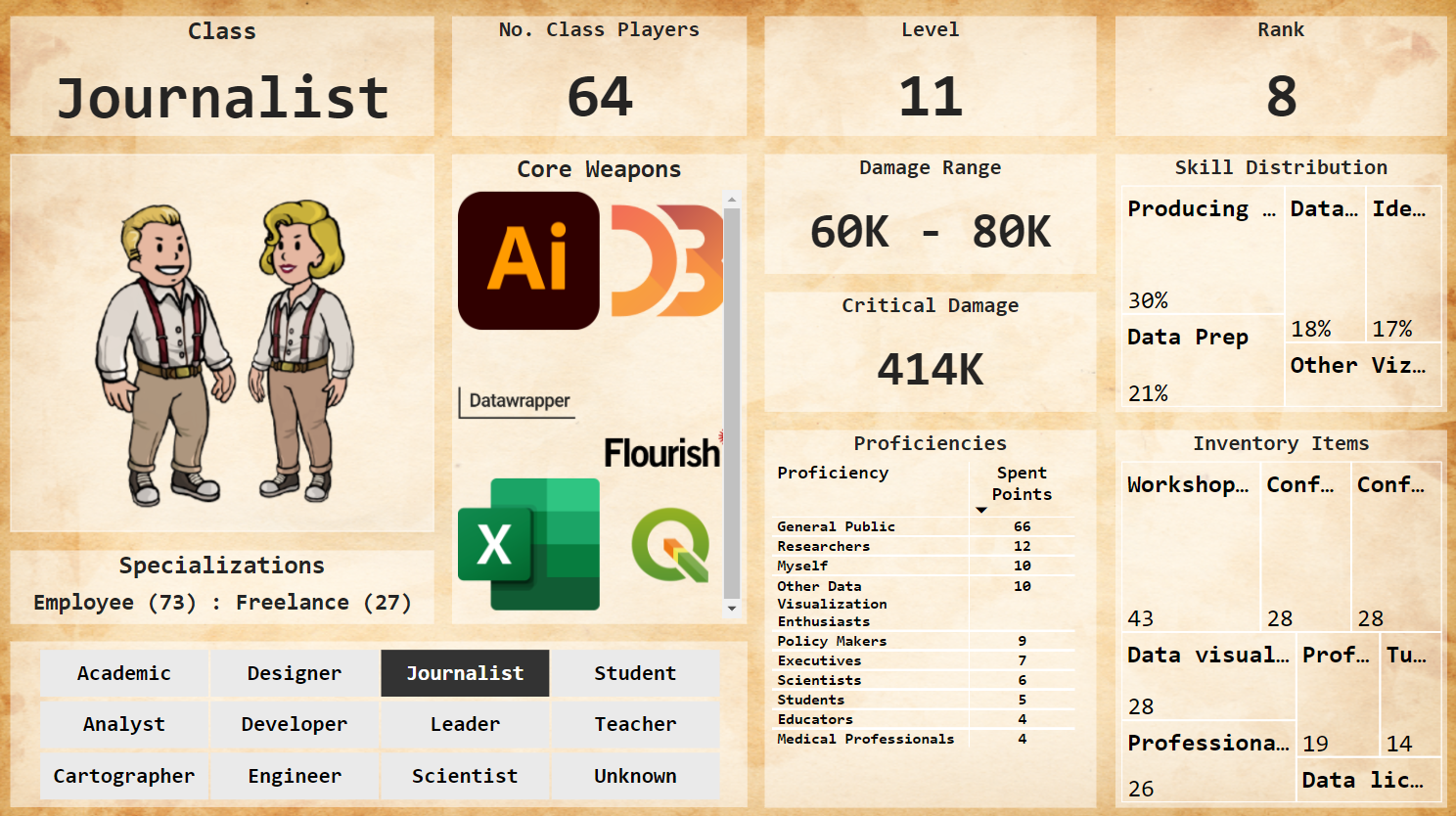Created by: Martina Dossi
The visualization focuses on the relationship between data visualization tasks and job titles in terms of dedicated time. It has been submitted as explanatory visualization given the presence of many plots showing overall trends and relationship that should guide the reader through the complete story. The purpose of the analysis is to investigate how different professional roles are related to data visualization tasks in terms of devoted time, answering question such as: 'is there any difference in how time is allocated to different activities between job titles?', 'which role spend more time in each task?', and 'what are the other tasks explicitly specified in the dedicated field?'.




























